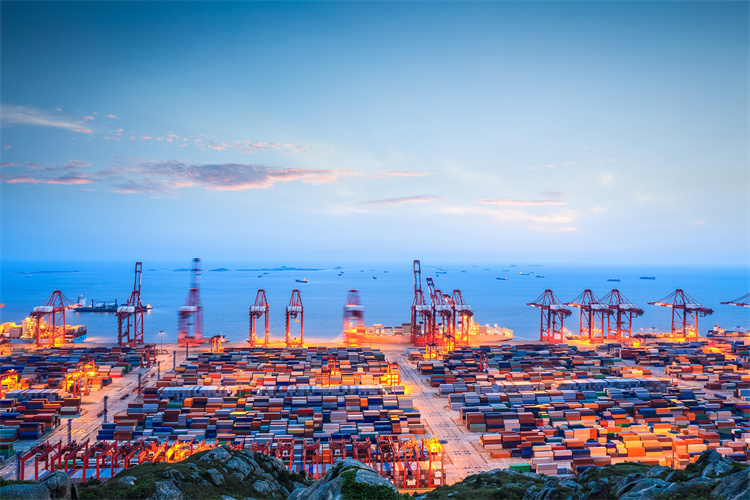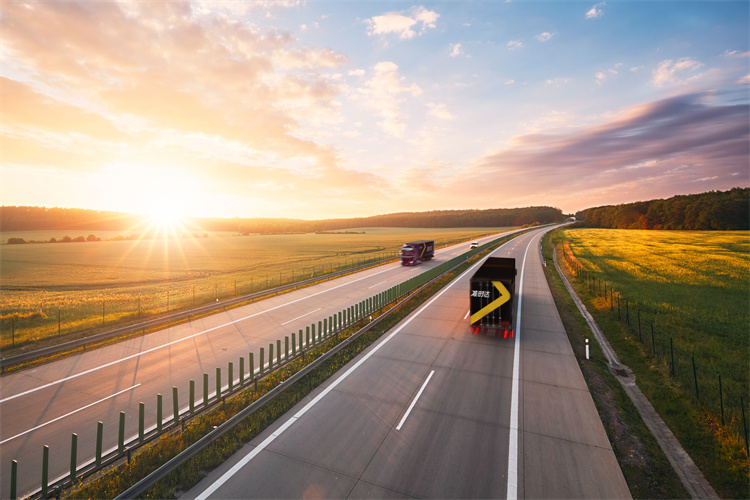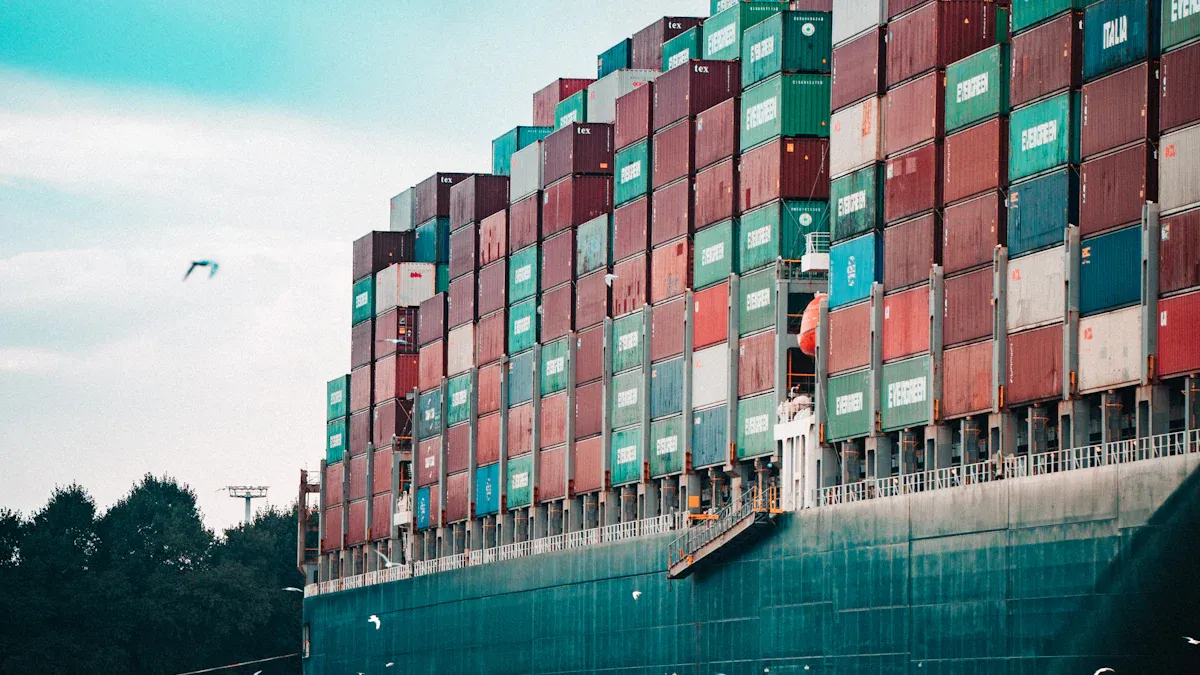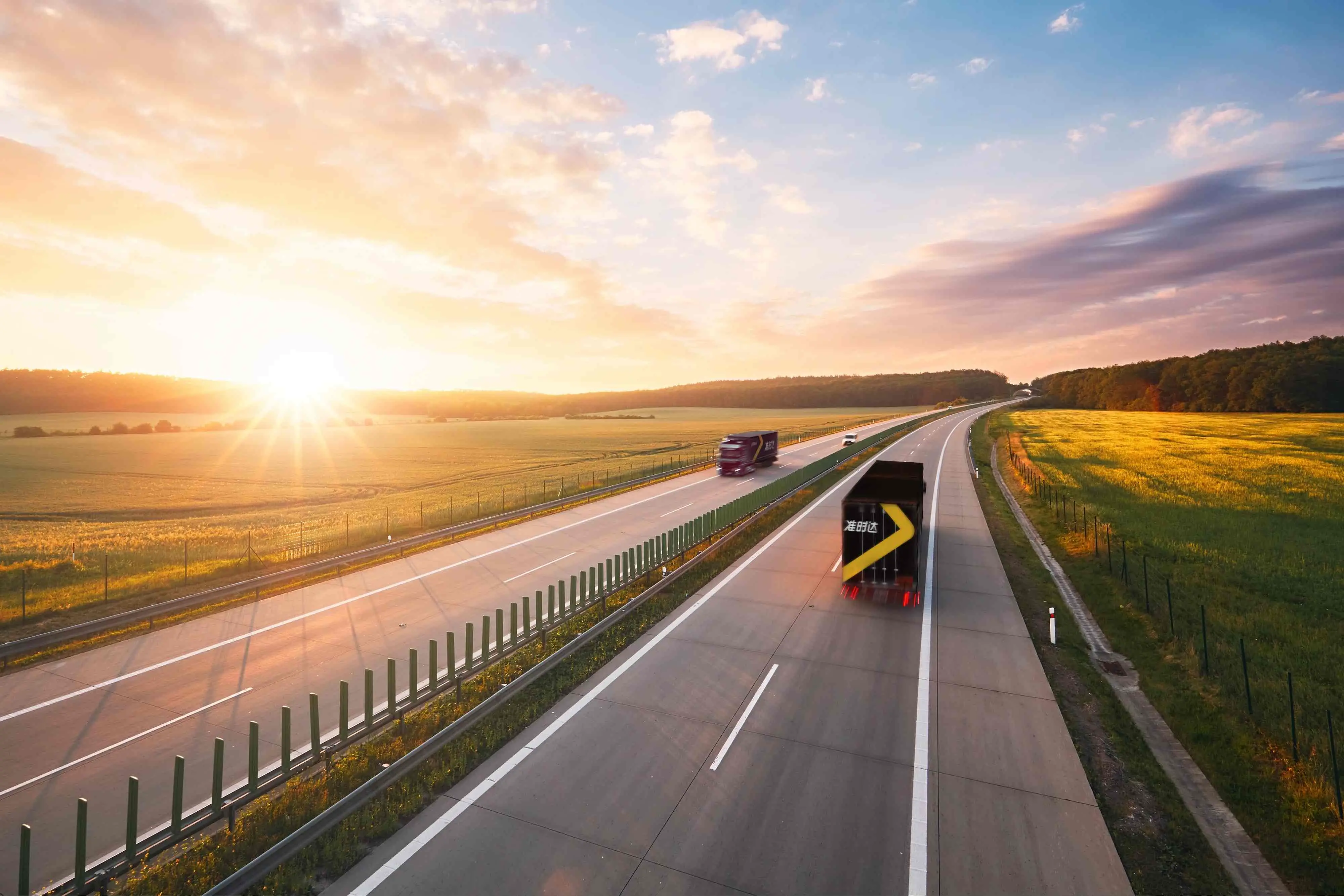The Evolution of Green Logistics for a Sustainable Future

You help create a better future by using green logistics. This method cuts pollution and boosts efficiency. Green logistics makes global trade more eco-friendly. JUSDA leads the way with smart ideas, creating greener supply chains that help both companies and Earth.
Key Takeaways
Green logistics lowers pollution and improves efficiency, helping the environment.
Using eco-friendly methods can reduce carbon emissions by 20% by 2030. This helps both the Earth and companies.
Technology like IoT and AI makes logistics better, saves energy, and supports green goals.
Understanding Green Logistics and Its Goals
What Is Green Logistics?
Green logistics works to lower the harm supply chains cause to nature. It improves production, material use, and delivery to be eco-friendly. The idea of "greenness" shows logistics can be both smart and kind to the planet. Since 1987, when the World Commission on Environment and Development Report came out, sustainability has been a big focus in global logistics.
Logistics creates about 24% of the world's CO2e emissions. Cutting these emissions is very important. Green energy, like solar and wind power, now makes up over 30% of the world's energy. New tools like AI are helping logistics save resources and work better. These changes show why green logistics is key to solving environmental problems.
Core Principles of Sustainable Logistics
Sustainable logistics follows key ideas to mix efficiency with care for the Earth. These ideas include:
Emission Reductions: Green logistics has helped cut carbon emissions by 25-40% in five years.
Cost Savings: Better efficiency has lowered logistics costs by 15-20%.
Waste Elimination: Changing packaging and reusing materials has reduced waste by 30-60%.
Supplier Performance: Programs have helped 40-70% of suppliers meet eco-friendly goals.
These ideas show how sustainable logistics helps both the planet and businesses.
The Role of JUSDA ESG in Promoting Sustainability
JUSDA ESG leads in green logistics with smart solutions and eco-friendly goals. It supports projects like "Clean Czech," which teaches about caring for the environment. Using tech like IoT and big data, JUSDA ESG makes supply chains faster and greener. Its global reach and transport skills also help green logistics grow.
JUSDA's work matches the goals of green logistics. It proves businesses can be eco-friendly and still work well. By using JUSDA ESG's ideas, you can help the planet and improve your supply chain.
The Evolution of Green Logistics
Early Developments in Sustainable Supply Chains
Green logistics started with studying environmental problems. Before 2007, companies looked for ways to reduce supply chain harm. These efforts helped bring eco-friendly ideas into logistics. From 2007 to 2014, businesses focused on solving real-world issues. They used technology and improved operations to be more sustainable. After 2014, teamwork and checking progress became key. These changes matched global goals for a greener future.
Stage | Time Period | Key Focus Areas |
|---|---|---|
1 | Before 2007 | Studying environmental problems and starting sustainable practices. |
2 | 2007-2014 | Fixing problems, using technology, and improving sustainability in logistics. |
3 | Post-2014 | Teamwork, global goals, and tracking progress in green logistics. |
Key Milestones in Green Logistics
Green logistics has reached big achievements that changed the industry. Electric and hybrid cars use less fuel and cut pollution. Biofuels and hydrogen have made transport cleaner. Better route planning saves fuel and lowers emissions. Using biodegradable materials reduces packaging waste. Cutting down on packaging waste helps the environment. Renewable energy powers warehouses, saving non-renewable resources. Energy-saving tools lower energy use in logistics. Recycling programs and closed-loop systems reduce waste. Product take-back programs help recycle and reuse items.
Milestone | Environmental Benefit |
|---|---|
Electric and Hybrid Vehicles | Use less fuel and lower pollution. |
Alternative Fuels | Make transport cleaner with biofuels and hydrogen. |
Efficient Route Planning | Saves fuel and cuts transport emissions. |
Biodegradable Materials | Lowers waste from packaging. |
Reduced Packaging Waste | Uses fewer materials, creating less waste. |
Renewable Energy Sources | Powers warehouses with cleaner energy. |
Energy-saving Technologies | Uses less energy in logistics work. |
Closed-loop Supply Chains | Focuses on recycling and reusing materials. |
Product Take-Back Programs | Helps recycle and reuse products. |
The Future of Green Logistics with JUSDA ESG
The future of green logistics is exciting, led by JUSDA ESG. AI will help predict problems and improve operations. Circular economy models will cut waste and reuse materials. Blockchain will make tracking ESG goals easier and clearer. Local renewable energy will reduce the need for big power grids. Nature-based solutions, like planting trees, will protect wildlife. JUSDA ESG will also help suppliers cut emissions, making supply chains greener.
By using these ideas, your supply chain can be ready for the future. JUSDA ESG’s focus on eco-friendly tech ensures businesses can succeed while helping the planet.
Core Components of Green Logistics

Better Transportation and Route Planning
Planning routes well is key to green logistics. Loading trucks fully and avoiding extra trips save money and cut pollution. Studies show this can lower vehicle use by 12.5% and CO2 emissions by 13%. It also makes tracking emissions easier and improves how things run.
Using tools like IoT sensors and data analysis helps a lot. These tools show the best routes and cut fuel use. This method supports the planet and boosts work efficiency by up to 15%.
Metric | Result |
|---|---|
Fewer vehicles used | 12.5% |
Lower CO2 emissions | 13% |
Extra benefits | Better tracking and smoother operations |
Green Packaging and Reusing Materials
Eco-friendly packaging is important for greener supply chains. Reusing materials cuts CO2 by 49%, energy use by 48%, and water use by 50%. Simple packaging systems also reduce waste and save resources. These ideas match circular logistics, where items are reused and recycled.
You can use biodegradable materials and design reusable packaging. This helps nature and lowers waste costs. Combining green packaging with better logistics creates a more eco-friendly supply chain.
Practice Type | CO2 Emissions Reduction | Energy Usage Reduction | Water Consumption Reduction |
|---|---|---|---|
Reusing Packaging | 49% | 48% | 50% |
Simplifying Packaging Systems | 32% | 31% | 36% |
JUSDA’s Efforts for Greener Supply Chains
JUSDA leads in making supply chains more sustainable. Its JusLink platform uses IoT and big data to plan routes and manage resources better. This lowers energy use and improves how things work. JUSDA also helps businesses go green by using renewable energy and cutting packaging waste.
Working with JUSDA helps you meet global green goals. Their knowledge ensures your supply chain stays eco-friendly, efficient, and cost-effective.
Technology and Innovation in Sustainable Logistics

Alternative Fuels and Energy Sources
New fuels are changing logistics to protect the environment. Electric and hybrid vehicles use LNG and methanol for power. Hybrid systems can save up to 21% on fuel use. This makes operations more efficient and eco-friendly. People prefer e-fuels over biofuels for safety and saving resources. Big shipping companies lead in using these fuels due to contracts and goals.
Businesses help grow fueling stations by investing in clean energy. Financial rewards and self-rules push companies to go green. These changes match green logistics goals, cutting emissions and saving energy.
Smart Logistics Solutions and Digital Platforms
Smart logistics uses tech to improve supply chains. IoT tracking shows where shipments are in real time. This helps manage inventory and track deliveries better. AI tools study data to predict delays and find faster routes. Cloud systems make planning easier and improve customer service.
Blockchain makes transactions safer and stops fraud. These tools boost productivity and reduce waste and energy use. They also support sustainability efforts.
JUSDA ESG’s Integration of IoT and Big Data
JUSDA ESG uses IoT and big data to improve logistics. Its JusLink platform tracks shipments and plans routes smarter. This saves energy and makes operations run better. IoT and big data also bring transparency and teamwork to supply chains. JUSDA ESG helps you meet green goals while staying efficient.
Benefits of Green Logistics for Businesses and the Environment
Environmental Impact: Cutting Carbon Emissions
Green logistics helps lower carbon emissions, which make up 25% of global CO2. If no action is taken, this could rise to 40% by 2050. Sustainable practices can cut greenhouse gases by 20% by 2030. Using better routes and fuel-saving vehicles reduces emissions a lot. Many companies now use renewable energy and alternative fuels to run their operations. These actions protect nature and match global eco-friendly goals.
Key facts:
60% of logistics companies invest in green projects.
Green transport can cut emissions by 20% by 2030.
Economic Benefits: Saving Money and Boosting Efficiency
Green logistics saves money and improves efficiency. Better route planning and fuel-saving vehicles lower fuel costs. Eco-friendly packaging and reusing materials also save money. These steps reduce waste and use resources wisely. For businesses, this means higher profits and lower prices for customers.
Benefit | Details |
|---|---|
Lower carbon emissions | Better routes and fuel-saving vehicles cut greenhouse gases. |
Cost savings | Smart planning and fuel efficiency reduce fuel costs and provider rates. |
Better brand image | Green companies attract eco-friendly customers and build loyalty. |
Social Benefits: Happy Customers and Stronger Brands
Green logistics makes customers happy and builds a good reputation. On-time deliveries and clear updates improve service quality. People like companies that care about the planet. Research shows 87% of customers link good logistics with satisfaction. By going green, you meet customer needs and earn their trust. Being eco-friendly also helps your brand stand out in the market.
Key points for customer happiness:
Deliveries on time and without issues.
Solving problems quickly.
Clear and honest communication.
Regulations, Industry Initiatives, and Collaboration
Global and National Policies Supporting Sustainability
Governments make rules to support green logistics. These rules aim to cut pollution and use clean energy. Many countries give tax breaks to eco-friendly businesses. Some also require companies to report their carbon emissions.
Policies take time to work. For example, closing public transport affects emissions after 12 days. Following these rules depends on education and money support. Countries with better schools and income help follow green rules more easily. Good policies must be simple and helpful for everyone.
Industry-Led Initiatives for Green Logistics
Companies help make logistics greener. They work to save energy, cut waste, and use clean power. Some use electric trucks and plan better routes to lower pollution. Others recycle and reuse materials to reduce trash.
A study in Zambia showed businesses see green practices as useful. But knowing about them isn’t enough. Teaching programs and government rewards help companies go green. These steps make green logistics common in all industries.
Collaborative Efforts and JUSDA’s Leadership in Sustainable Logistics
Teamwork is key to making logistics eco-friendly. Governments, companies, and groups share ideas and work together. JUSDA leads by helping suppliers and clients build greener supply chains. Its JusLink system uses tech to save energy and cut emissions.
JUSDA also teaches businesses why green logistics matters. By working together, JUSDA makes sustainability a shared mission. This helps the planet and improves global supply chains.

JUSDA Solutions
To provide you with professional solutions and quotations.
Green logistics helps make the world more sustainable. Using digital tools and better routes saves energy. Electric vehicles cut pollution and work more efficiently. JUSDA leads by adding eco-friendly ideas to supply chains. Working together will create a greener future for everyone.
See Also
Comprehensive Overview of Eco-Friendly Transport in Supply Chains
Transforming Logistics Through Innovative Supply Chain Solutions
Sustainable Efficiency: Uncovering JUSDA's Logistics Expansion Journey
Paving the Way for Future Logistics Using Digital Tools
Artificial Intelligence in Supply Chains: Shaping Future Logistics
